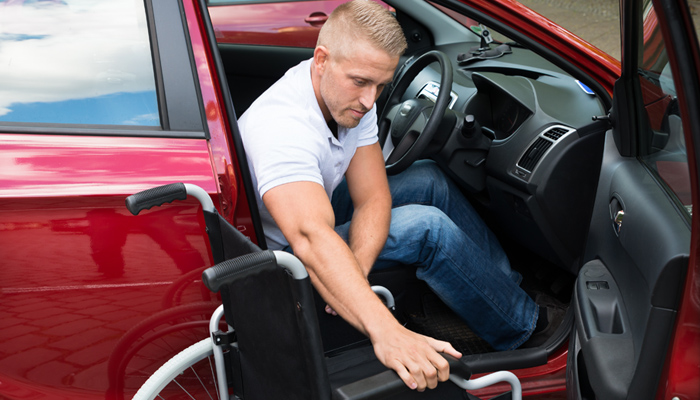This article is provided by our insurer partner, Arch and is written by Arch Insurance Risk Managers and/or surveyors and has not been verified for accuracy by a third party. This article is for general guidance only and aims to provide general information on a relevant topic in a concise form. None of the information should be taken as legal or professional advice and we recommend that for further information, you should speak to an expert in this field.
Guidance for Maintenance and Repair of Electric and Hybrid Vehicles
The use of electric and hybrid vehicles (E&HVs) is expected to increase, with greater availability and increased driving range.
Transitioning to E&HVs may mean that businesses involved in such operations, will need to identify any new risks associated with these vehicles and consider the best approach to managing them.
Potential Hazards in Maintenance and Repair
People working with E&HVs in the motor vehicle repair and roadside recovery industries and emergency services need to be fully aware of the hazards associated with them. These include:
- The presence of high-voltage components and cabling capable of delivering a fatal electric shock.
- The storage of electrical energy with the potential to cause explosion or fire.
- Components that may retain a dangerous voltage even when a vehicle is switched off.
- Electric motors or the vehicle itself that may move unexpectedly due to magnetic forces within the motors.
- Manual handling risks associated with battery replacement.
- The potential for the release of explosive gases and harmful liquids if batteries are damaged or incorrectly modified.
- The possibility of people being unaware of vehicles moving as when electrically driven they are silent in operation.
- The potential for the electrical systems on the vehicle to affect medical devices such as pacemakers.
Qualified Training Available
Those involved in vehicle repair and maintenance are likely to need a much greater level of competence to work on these types of vehicles safely, e.g. the qualified training awarded by such organisations as the Institute of Motor Industry (IMI).
Four categories of work have been identified, which are:
- Valeting, sales and other lower risk activities.
- Maintenance and repair excluding high voltage electrical systems.
- Incident response including emergency services and vehicle recovery.
- Working on high-voltage electrical systems.
These categories are outlined below with suggested primary controls.
Valeting, Sales and Other Lower Risk Activities
Remote operation keys should be kept away from vehicles if they are only needed to be close to the vehicle for powering up. This should prevent the vehicle from accidentally moving.
Employees who move these vehicles around the workplace should be aware that others may not hear it approaching them. Similarly, people who work around E&HVs should be aware that they may move without warning.
Cleaning these types of vehicles by pressure washing can prove dangerous, as it has the potential to damage high-voltage electrical components and cables. High-voltage cables are usually coloured orange. Refer to guidance from manufacturers before valeting in any under body areas including the engine bay.
Maintenance and Repair Excluding High-Voltage Electrical Systems
Anyone working in the motor vehicle repair and recovery industry is now more likely to come across E&HVs and as a result needs to be aware of the additional hazards they may be exposed to. They may also need to develop a wider range of skills and knowledge and have access to specialist tools and equipment in order to be able to work safely.
Voltages present in E&HVs are significantly higher (currently up to 650 volts direct current (dc)) than those used in other vehicles (12/24 volts dc). In dry conditions, accidental contact with parts that are live at voltages above 110 volts dc can be fatal. For E&HVs dc voltages between 60 and 1500 volts are referred to as “high voltage”. High voltage is defined differently in other industry sectors.
The vehicle battery systems may contain chemicals that can be harmful if released. They also store significant amounts of energy that can give rise to explosion if not dealt with correctly.
Designs of E&HVs differ greatly from manufacturer to manufacturer. Having information specific to the manufacturer and the vehicle being worked on is important in identifying what actions are necessary to work safely.
Remote operation keys should be locked away with access controlled by the person working on the vehicle. If the key is required during the work the person working on the vehicle should check that the vehicle is in a safe condition before the key is retrieved.
Vehicles should be checked for signs of damage to high voltage cabling (usually coloured orange) or electrical components, before starting any work on the vehicle. Unless a specific task requires the vehicle to be energised always isolate or disconnect the high voltage battery in accordance with manufacturer’s instructions.
Determine the locations of high-voltage cables before carrying out tasks such as panel replacement, cutting or welding. Take appropriate precautions to prevent them from being damaged.
Incident Response Including Emergency Services and Vehicle Recovery
Vehicles should be visually checked for signs of damage to high voltage electrical components or cabling. Consider whether the integrity of the battery is likely to have been compromised. Shorting or loss of coolant may present ignition sources in the event of fuel spillage. If the vehicle is damaged or faulty, and if safe to do so, isolate the high-voltage battery system using the isolation device on the vehicle. Refer to manufacturer’s instructions for guidance.
During any transfer onto a recovery vehicle, the remote operation key should be removed to a suitable distance and the standard 12/24-volt battery disconnected to prevent the vehicle from being activated/started.
Have access to reliable sources of information for specific vehicle types. For example, mobile data terminals used by fire and rescue services or by reference to manufacturer’s data.
E&HV vehicles should not be towed unless it can be determined that it is safe to do so. The movement of the drive wheels and generate dangerous levels of voltage.
Working on High-Voltage Electrical Systems
Refer to vehicle specific sources of information from the manufacturer (and trade bodies) to identify precautions you need to implement which are necessary to prevent danger.
As mentioned previously remote operation keys should always be kept locked away from the vehicle to prevent any accidental operation of electrical systems and accidental movement of the vehicle. If the key is required whilst working on the vehicle, the vehicle must be in a safe condition before the key is retrieved.
Visually check the vehicle for signs of damage to high voltage electrical components or cabling.
High-voltage systems should be isolated (with the power disconnected and fully secured) and proven dead by testing before any work is undertaken. Always isolate and lock off the source of electricity and in accordance with manufacturer’s instructions.
Even when isolated, vehicle batteries and other components may still contain large amounts of energy and retain a high voltage. Only suitable tools and test equipment should be used. These may include electrically insulated tools and test equipment compliant with GS38. Refer to manufacturers data on how to discharge stored energy.
There may be circumstances (e.g. after collision damage) where it has not been possible to fully isolate the high-voltage electrical systems and to discharge the stored energy in the system. Refer to the manufacturer’s instructions about what controls measures should be implemented before attempting to carry out further remedial work.
Battery packs are susceptible to high temperatures. The vehicle will typically be labelled advising of its maximum temperature which should be considered when carrying operations such as painting, where booth temperatures may exceed this limit. Measures should be implemented to alleviate any potential risks, e.g. by removing the batteries or by providing insulation to limit any temperature increase in the batteries.
Working on live electrical equipment should only be considered when there is no other way for work to be undertaken. Even then it should only be considered if it is both reasonable and safe to do so. You should consider the risks for working on this live equipment and implement suitable precautions including, as a final measure, the use of personal protective equipment (PPE). Refer to manufacturer’s instructions for precautions when working live, including their PPE requirements.
It may be necessary to isolate the vehicle within an area so that others cannot easily approach. Warning signs should also be used to make people aware of the dangers.
About the author
Date: July 15, 2023















